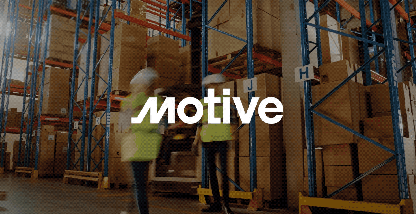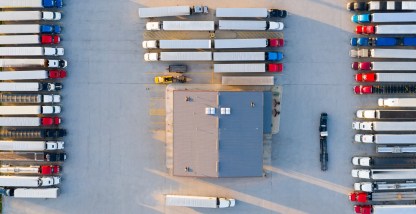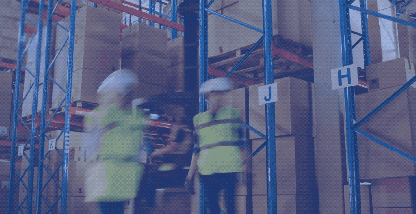See what 1,000 physical operations leaders across 11 industries had to say about the challenges faced over the last year and the opportunities ahead.
As 2023 winds down, we reflect on the challenges that physical economy leaders faced this year and map out the opportunities that lie ahead. If there was one thing leaders could count on in 2023, it was more uncertainty. Inflation was expected to subside, though it never did. The economy was stuck in neutral. And skilled labor remained elusive.
Over the past year, we’ve heard from customers who say they’re overwhelmed and overworked. Labor, resources, and time have become increasingly scarce, and leaders are feeling the pressure. They need real solutions that help lift their burden, not an onslaught of data that adds to it.
In surveying 1,000 physical economy leaders across 11 industries, including trucking and logistics, oil and gas, construction, field service, and more, we wanted to better understand the state of the physical economy and the 12-month outlook of the people we serve. The result of this effort — Motive’s Physical Economy Outlook 2024 — presents the most quantifiable view to date of the challenges and opportunities facing leaders of the physical economy, as described in their own words.
Challenges: Rising costs were the biggest problem in 2023, yet far from the only one
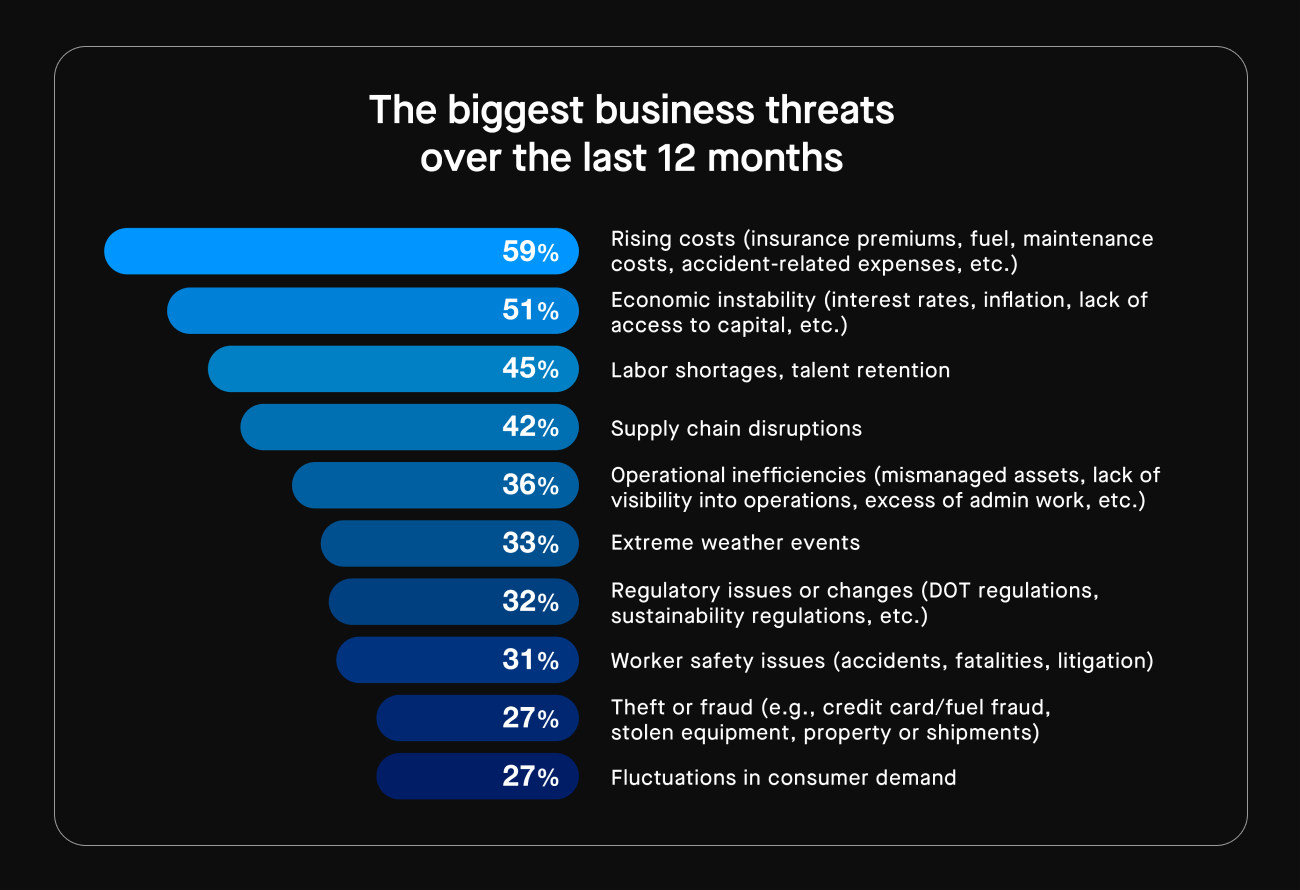
Nearly 60% of respondents said rising costs posed the biggest threat to their business over the last year, followed by an unstable economy, labor shortages, supply chain disruptions, and operational inefficiencies. Fraud also arose as a major theme, with 44% of leaders saying fraud is having a big financial impact on their business, even though they aren’t sure how to find it.
Leaders estimate that 19% of current fleet spend is lost to fraud or theft. It’s even higher for industries like construction, where leaders estimate that 22% of their fleet spend is lost to fraud. As a result of these challenges, leaders report an average revenue loss of $867,634 — with businesses reporting average losses of over $1 million in trucking and logistics and oil and gas. That’s an incredible amount of money when your business is operating on razor-thin margins, often due to variable costs such as fuel, maintenance, and insurance premiums. It highlights the immense pressure these leaders are under.
Respondents told us:
- “I don’t always know that my employees are safe or where my vehicles are.”
- “I struggle with the unpredictability and lack of software to manage and forecast the issues that arise.”
- “Our workload is insane and we can’t retain workers at all. With the labor shortage, everyone else has to work 60+ hour weeks.”
One thing is clear – leaders are lacking real-time visibility and a 360-degree view of their operations. Without visibility, they’re working in the dark. With developments in artificial intelligence (AI) rapidly changing the way businesses operate, it’s unfathomable to think that leaders are navigating so much complexity in the dark. But they are. About 42% of leaders said they lack a single view into their workers, vehicles, equipment, and fleet spend. More than 1 in 3 said they don’t have the visibility to perform their jobs effectively. And many more said the sheer volume of tools being used makes data difficult to gather and track.
Opportunities: Leaders are betting on technology – especially AI – to transform their operations
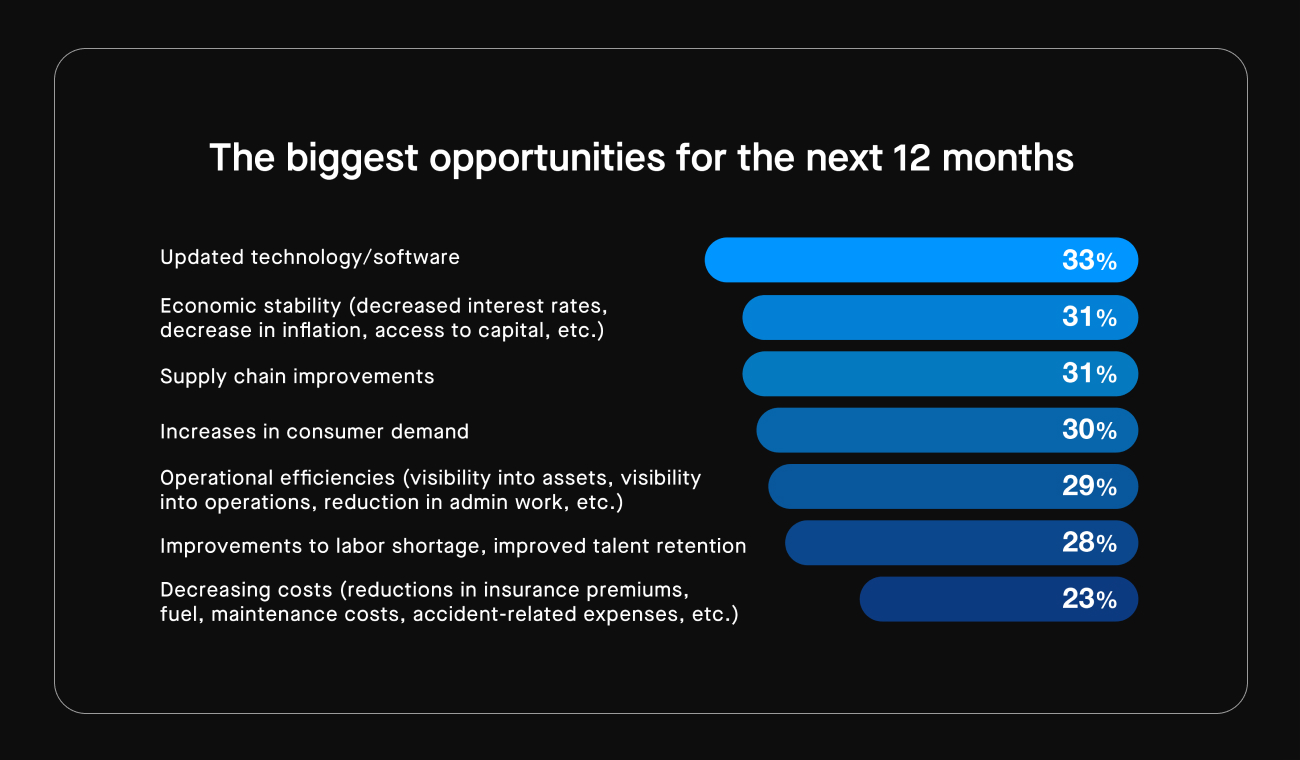
The top five opportunities for physical operations over the next 12 months include updated technology and software (33%), economic stability (31%), supply chain improvements (31%), increase in demand (30%), and operational efficiencies (29%). Amid economic uncertainty, a structurally constrained labor market, and fraud threats on the rise, leaders see technology as one of the only aspects of their operations that they can consistently control. Fully 80% of leaders agree that having a single, end-to-end solution to manage physical operations would make their job easier.
“One of our biggest issues was dealing with what we didn’t know and what our previous system didn’t tell us. In most cases, we found out about problems hours after they happened. We couldn’t prevent issues or respond immediately. With AI, the game has changed.” – Nick Oney, Fleet Director, Kendall-Xylem
Leaders view AI as a game changer for their companies. Physical operations leaders, in particular, are counting on AI to help them keep tabs on assets and vehicles, make better use of resources, and make data-informed decisions. Seventy-six percent of leaders want to use AI to gain critical visibility across their physical operations. Twenty-five percent already are using AI, and 71% want to use generative AI.
No matter how you look at it, physical operations leaders are embracing AI, with 69% recognizing its potential to positively impact their roles. Only 12% express concern about AI eliminating their jobs. Approximately one-third believe AI can help address the industry’s labor gap.
There’s a lot more to explore in our inaugural Physical Economy Outlook 2024. Download the full report for an in-depth look at the state of the physical economy and tools you can implement to improve the safety, productivity, and profitability of your business.






